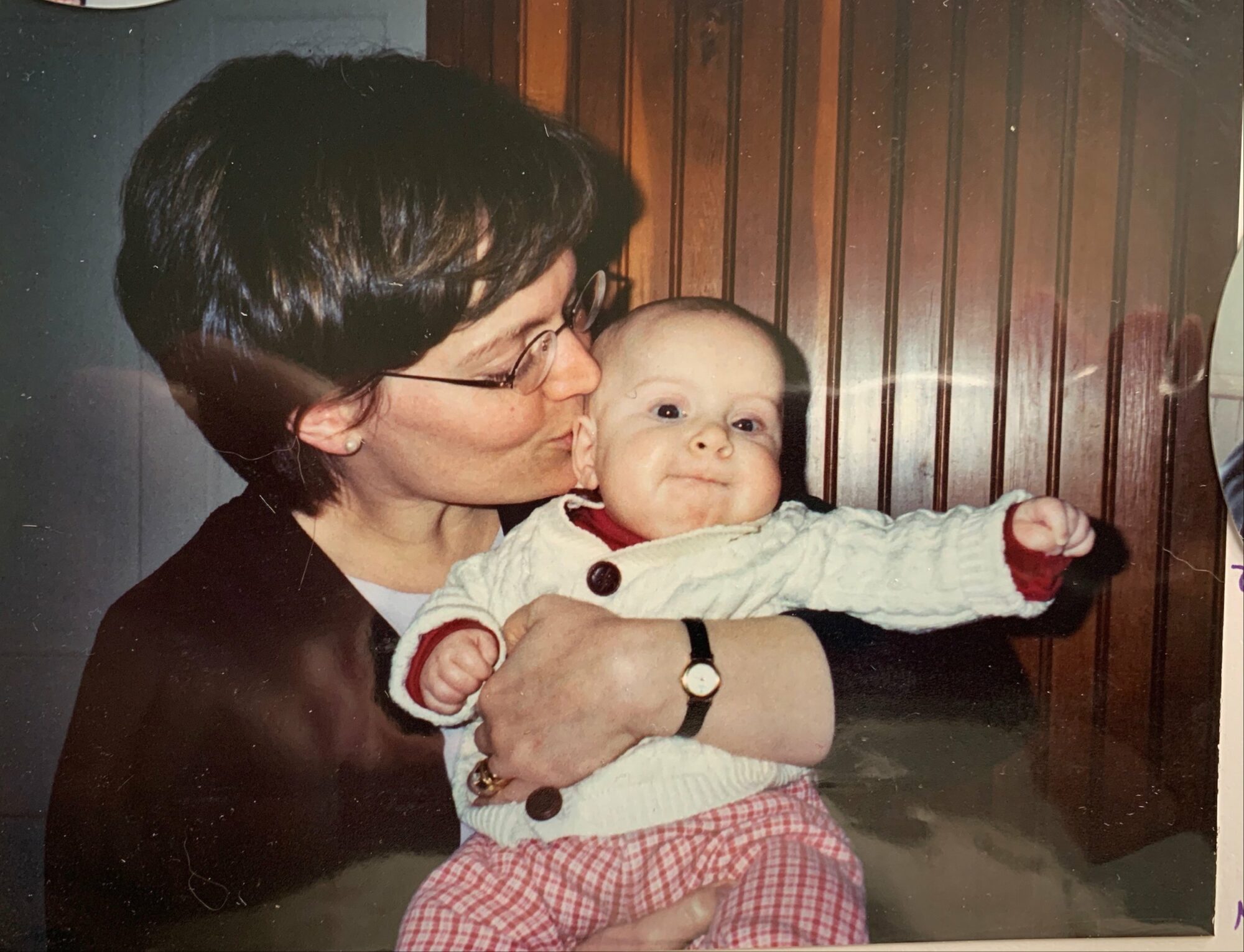Nineteen years ago, in early March, I was on an airplane circling O’Hare, waiting to land in Chicago. I had 4-month-old baby Harper in my lap, travelling home alone to see my very sick grandmother. The weather in the Midwest, much like here in Upstate New York, can be finicky. And that night, it was downright terrible. The runways were icing up; the crosswinds were not helpful. There was a backup of incoming flights waiting their turn to land. The pilot assured us that there was no danger, we just had to circle (and circle, and circle) until it was our time.
My memory of that night is pretty foggy, except for the excruciating wait. I was a new mother, travelling with a baby, conscious that every noise she made echoed throughout the cabin. Baby Harper had been a stellar traveler, sleeping nearly the entire flight from Boston. But she was beginning to stir and my biggest worry—the changing cabin pressure as we descended and its effects on her little ears—was about to be put to the test.
Still…we circled. The brilliant lights of Chicago seemed so close, but then we would turn toward Lake Michigan and over its utter blackness. This was well before I ever owned a cell phone, so I had no way to communicate with my dad, who was undoubtedly waiting for me at the terminal. Concerned as I was about my baby’s comfort (and the very real possibility she would start crying and aggravating the other anxious passengers), my thoughts went to my grandmother and how very little time she had left. The event may have in actuality only lasted 20 or 30 minutes, but it felt like an eternity.
Here we are in March 2021, and I again feel we are circling in an enormous holding pattern. Like so many others, my husband and I are patiently waiting and hopeful to get vaccinated soon, and are always happy to hear when friends and family have gotten theirs. Every time another plane lands, I feel we are one step closer to landing ourselves.
On the farm, March is always a bit of a waiting game. We plan for spring, ordering baby chicks and preparing brooders, while farmer friends are starting seeds in their greenhouses. Some days give us the brilliant hints of what is to come: Birds singing, warmer and brighter mornings, mud puddles. But then we circle back around to frigid overnight temperatures, plunging us back into the depths of winter. Hopes rise and fall with the mercury in the thermometer.
Lack of control—combined with the stress of potentially bad outcomes—makes any waiting period all the more difficult. As spring approaches, our hay supply for the goats and sheep starts to dwindle, so we count the remaining bales and check the calendar, worrying with every cold snap that green grasses will not come in time. If grazing is delayed, we will have to buy hay and adjust any expectation of a return on our winter animal raising efforts. Dairy farmers must wait year-round for the milk check to come twice each month, not entirely sure what price they will be paid or whether it will cover their expenses. All we can do is plan and hope for the best, and be constantly reminded that patience is indeed a virtue.
As Tom Petty said, the waiting is the hardest part. In September of 1995, my then-fiancée Peter and I went to see Tom Petty and the Heartbreakers at the Target Center in downtown Minneapolis, MN. We had the nose-bleed seats with “partially obstructed views”. Enormous speakers hung from the ceiling, just above the performance space, blocking much of our view from our seats at the tip-top of the venue. All we could see was the stage floor and its patchwork of oriental rugs; there were no megatron-type screens. Throughout the concert, we could see Tom Petty’s feet and sometimes his legs, when he would strut up to the very front of the stage. We waited the entire concert, thinking we surely would see the top half of him at some point! Sadly, we never did. I guess sometimes patience does not pay off, so be sure to pay for the unobstructed view next time—when we can all go to concerts again, that is!
